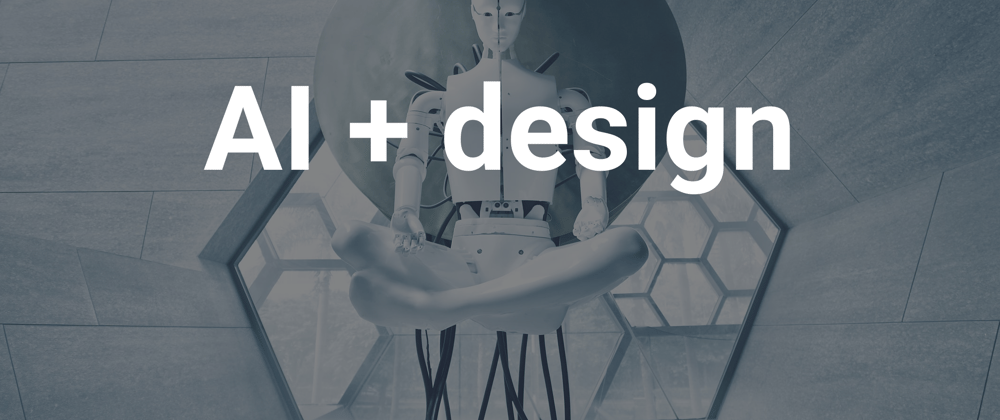AI, or artificial intelligence, is an often overused buzzword that in itself highlights how far technology has come, especially as it relates to design in startups. While artificial intelligence has traditionally been used in personalizing products and services based on large repositories of collected data, it has become used by some of the most innovative startups to help assist and drive the entire design decision-making process.
According to Statista, the value of the AI market is set to grow by $126 billion by 2025. Therefore, there is significant room for development in the industry as it relates to product design and creativity for companies. The question lies in how can AI promote control over creative concepts and design in companies, especially startups, in a way that such contributions are meaningful and result in more efficiency for product teams? From a design context, AI will allow startups to realize empathy as a component when designing products and then use those insights, oftentimes gained from valuable data, to drive the development of extremely personalized products. Moreover, one of the central ways AI is practical for startups is to enhance design decisions. Design decision-making used to be a slow process that required many resources from companies, and even worse for startups, presenting bottlenecks in product development. AI now allows startups to make more efficient and speedy design decisions, which ultimately result in better products and most importantly, satisfied users.
Enhancing design decisions
Design decision-making was previously time-consuming and relied on the traditional design thinking principles from ideation to prototyping. The process was very routine, and included many repetitive steps, not to mention the back and forth as a result of sometimes inefficient user testing. AI enhances the design decision-making process by reassigning the role of the designer to one that has more capabilities and control over design outcomes, largely due to insights and the use of tools that eliminate repetitive tasks and time-consuming research. With such insights and efficiency, designers can create experiences that precisely match the users that products are intended for.
How AI assists in the design of better products
User researchers often gather data from controlled environments, and while often extremely useful, for companies that want to tailor their research and find out how to personalize products and services for the many different users of their products, it could be very resource-intensive. AI gathers data such as location, product selection, reviews, and more to create distinctive profiles that are later used to provide design teams with what features to incorporate in future product designs. The gathered data that AI repositories have accumulated over time enables designers to keep products human-centric, in other words, user-friendly by acknowledging the problem-solving model and leveraging the benefits of machine learning and extreme personalization.
AI for human-centered design
Human-centered design is rooted in user experience and draws on insights gained from empathy. While there’s still much to be learned in terms of AI’s ability to assist empathetic design that puts users first, designers could iteratively improve products based on a user's interaction with certain components of design. For example, if a certain shape, size, or color of a product’s UI elements improves user experience based on geographical location, then AI could help designers design other products for those locations given previously gathered information. This iterative process of improving a product is imperative to satisfying end-user outcomes and is based on the problem-solving loop, a process that’s common among innovative startups.
Design problem solving
Problem-solving in design is a complex of activities that involve different techniques during the solution creation process. While creativity has a lot to do with imagination, problem-solving is an integral component. If startups could adhere to principles of the problem-solving process, and develop human-centric products, while using insights from gathered datasets to improve products, then their user-friendly designs would put them ahead of the industry.
The problem-solving process:
- Define the problem.
- Create the solution.
- Test and learn.
- Refine the solution based on testing results.
By following the problem-solving process, designers can leverage AI to make high-level design decisions and then create products based on the insights. These unique benefits are exemplified by machine learning and its capabilities of personalization.
Learning and personalization
A system's ability to learn and teach itself is based on preset parameters set by humans, an aspect of AI that designers could take advantage of. By designing products based on the many different datasets gained from user interactions, products could be customized even in real-time. For instance, Amazon makes product suggestions based on user’s browsing and search history, so the system can adapt to user preferences continuously. This process iteratively improves the product and provides a precise level of personalization that’s unprecedented.
Final thoughts
Artificial intelligence is a valuable tool that could help drive creativity for startups. The capabilities that AI presents allow startups to easily use data gathered from insights to create user-centered products emphatically. The problem-solving process allows startups to leverage the principles of gathering user data to enable AI’s iterative improvement capabilities. With problem-solving models, high-level design decisions would result in a fast and efficient design process, leaving more repetitive design aspects to technology. The information gathered from users over time could also help design teams cater to users based on a set of parameters. With an interactive approach to making design decisions based on insights from AI, startups could realize its immense potential to create better products.







Top comments (0)